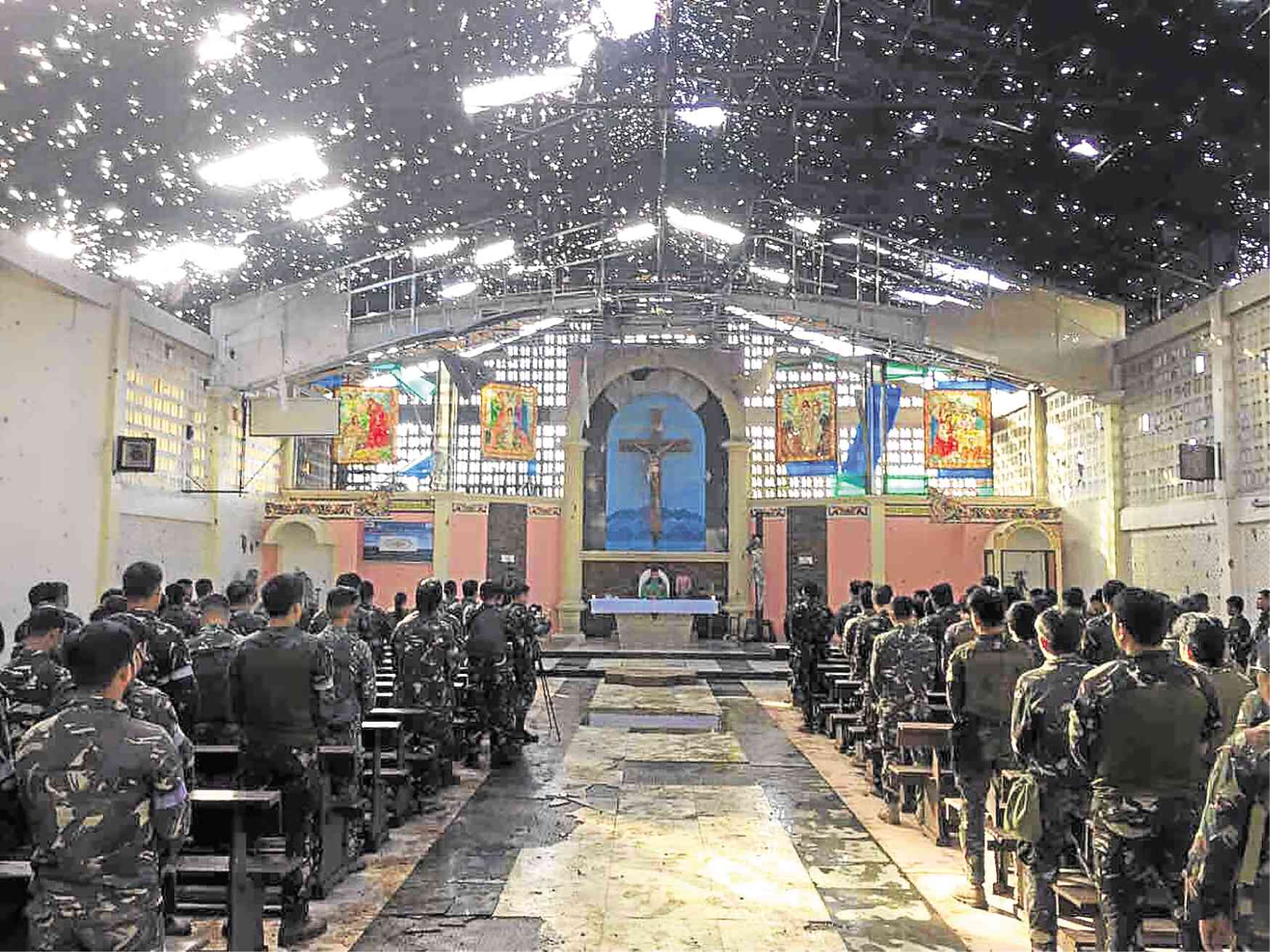Marawi Catholics long for a place to pray

PRAYING MEN In this 2017 photo, soldiers attend Mass inside the church that was damaged during the Marawi siege. —PHOTO BY JOINT TASK GROUP RANAO
MARAWI CITY, Philippines — Two years after the siege that reduced the central business district here to rubble, Catholic residents still feel “religiously” displaced as they continue to live in tents along with other evacuees.
As the country observes the Lenten break, these devoted Catholics only long for a place to pray for the Holy Week.
“We cannot even gather for a Bible study,” said Genesis Ranao, 32, who has been living in one of the tents at Sarimanok Tent Area 2 in Barangay Poblacion since April last year.
“We are worried our fellow evacuees who are Maranaos might get upset because they might think we don’t respect them. We cannot do it silently because we have to sing songs of praise,” he said.
Devout Catholic
Article continues after this advertisementRanao is a former resident of Moncado Colony, host of the St. Mary’s Cathedral inside the 250-hectare ground zero. The village was the most affected area (MAA) in the fighting between government troops and the Islamic State-inspired Maute group in 2017.
Article continues after this advertisementAlthough his grandfather and father are Maranao, Ranao grew up a devout Catholic. His mother has been a devotee of Maria Auxiliadora (Mary, Help of Christians).
“We used to wake up as early as 4 a.m. to recite the rosary and would do it again at 6 p.m. while my Maranao relatives in the neighborhood were having their ‘Sambayan’ (Muslim prayer),” Ranao said.
When he was 10, he joined the altar boys and later became a youth ministry leader.
Clearing
Last April 12, Task Force Bangon Marawi, through the National Housing Authority, started tearing down the structures inside the MAA, whose owners gave their consent to have these torn down to give way to development.
But Marawi City Mayor Majul Gandamra said no consent had been given yet to demolish St. Mary’s Cathedral.
Inside cathedral
Ranao said he missed the things he usually did at the cathedral during Holy Week: help prepare for the Station of the Cross, assign people who would read the Seven Last Words and prepare for the Easter Sunday celebration.
“I used to write a script and direct the dramatization of the Seven Last Words to be role-played by our youths who were very active in church activities,” Ranao said.
He said unlike the “Salubong” procession in other Christian communities, they used to celebrate Easter Sunday inside the cathedral.
Before the siege, they used to perform the Station of the Cross inside the 103rd Infantry Brigade’s Kampo Ranao. When the siege broke out on May 23, 2017, Ranao fled Marawi and took refuge in Barangay Buru-un in Iligan City with his then 10-year-old son.
1st Holy Week
He remembered the first Holy Week he spent after the siege. In an evacuation center in Iligan, he gathered his fellow evacuees at a corner of a huge ground of the Iligan City Fisheries National High School in Barangay Buruun to say their prayers and read solemnly the Seven Last Words.
But this year, even if he wanted to do the same thing, the tents inside Sarimanok Tent City offered only small space.
He felt his being a Catholic was no longer complete. “It has been a year since I stopped going to church. I have no choice. We have no church nearby. The chapel that we had inside Kampo Ranao has been closed since the siege,” he added.